Q&A: ace mech creator Fausto de Martini
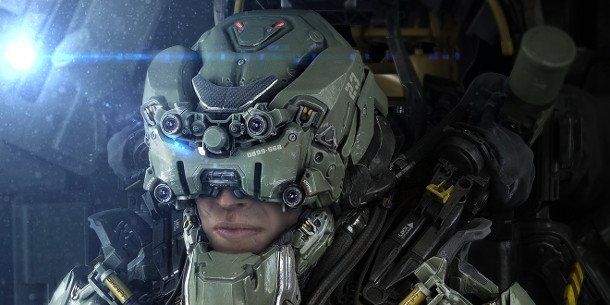
Blizzard’s former 3D art director tells us about StarCraft, his move to movie illustration, and his tips for faster, more efficient concept design in 3ds Max and ZBrush, on display in his upcoming Gnomon Weekend Workshop.
 Fausto de Martini is a concept designer, art director and illustrator. Largely self-taught in 3D, he was headhunted by Blizzard Entertainment after posting his personal design for the StarCraft Space Marine on CG community websites, going on to work on projects including World of Warcraft, Diablo III and StarCraft II: Wings of Liberty and Heart of the Swarm.
Fausto de Martini is a concept designer, art director and illustrator. Largely self-taught in 3D, he was headhunted by Blizzard Entertainment after posting his personal design for the StarCraft Space Marine on CG community websites, going on to work on projects including World of Warcraft, Diablo III and StarCraft II: Wings of Liberty and Heart of the Swarm.
After nearly a decade in Blizzard’s cinematics department, many as 3D art director, he now works as a freelance illustrator in the movie industry, where his recent projects include Robocop and Transformers: Age of Extinction.
An accomplished designer of both hard-surface and organic characters, Fausto is known for creating high-end concept art using rapid 3D and 2D techniques. On Saturday 8 February, some of those techniques will be on show in Gnomon School of Visual Effects’ Weekend Workshop on 3D Design Creation for Film. We caught up with Fausto to find out a bit more about his career – and his tips for faster, more efficient concept design.
CG Channel: How did you get into 3D?
Fausto de Martini: I came across 3ds Max back in Brazil, while I was working for a game magazine. We hired someone to create a CD with game demos and he did a quick animation for the company logo. I was impressed that he was able to do that at home, so we talked about collaborating on a small videogame. In order to create the designs, he suggested that I learned 3D. As soon I started, I fell in love with it right away!
CGC: Your first art jobs were for advertising studios in Brazil. How did you get from there to Blizzard?
FdM: I was working on a new design for the StarCraft Space Marine on my spare time and a friend suggested that I should post it on websites like CGTalk and CG Channel. I was taken by surprise when I saw the image plugged on the front page of both websites. I got contacted by Blizzard after that.
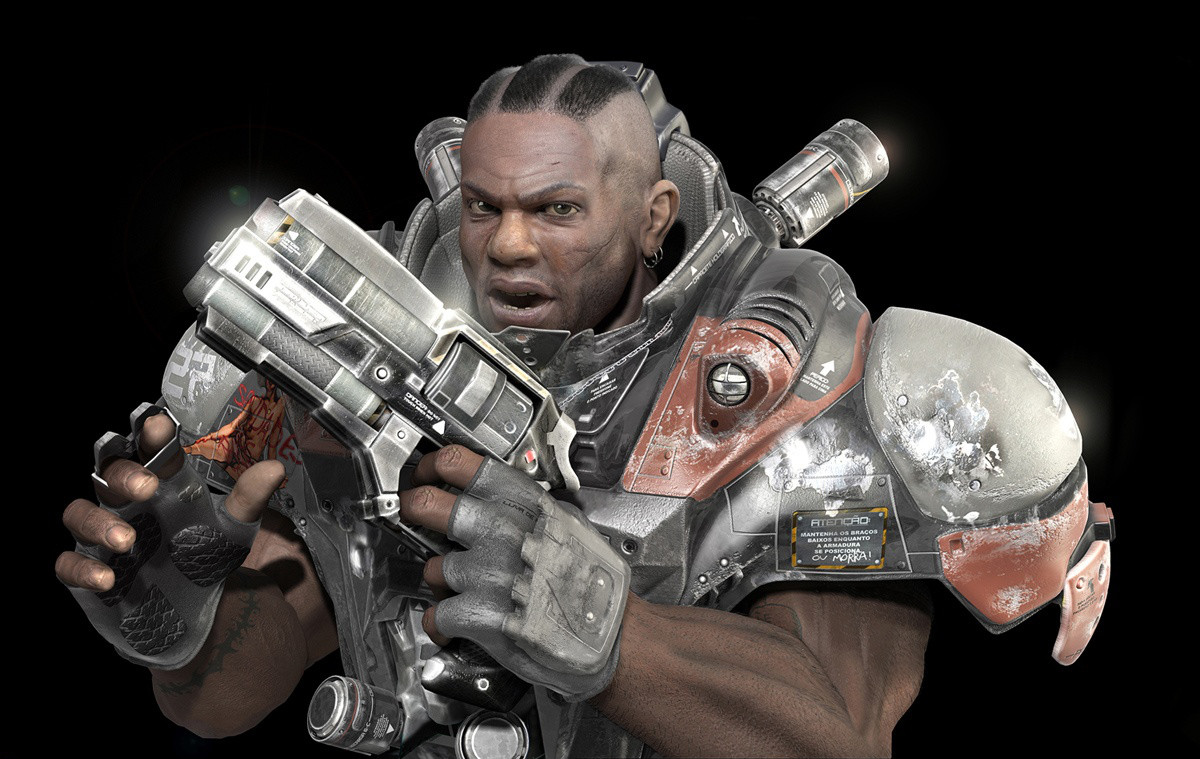
Created as a personal project while he was working in Brazil, Fausto’s space marine character caused a huge buzz on CG community sites. Blizzard Entertainment contacted him shortly afterwards.
CGC: What were the biggest changes you saw in the industry during the decade you worked at Blizzard?
FdM: The main thing I saw changing is the amount of talent surfacing from all over the world. Ten years ago the industry was smaller. Nowadays the art community is much larger, with an immense pool of talent from all corners of the world.
CGC: Which makes it harder for young artists to get noticed on the strength of their online portfolios alone. Do you have any tips for making your work stand out from the crowd?
FdM: I think the best tip is always to try to create fresh designs. There are so many artists doing great work nowadays that is easy to get the styles blurred. Establish your own style: don’t copy those of other artists.
CGC: How difficult was it to move from games to movie work?
FdM: Since I came from the cinematics side of the game industry the transition was very smooth. The fact I was used to detailed models and complexity really helped. The main difference between the movie and game industries is the time you spend on a single project. Movies tend to have a shorter production time so you move around faster than on games.
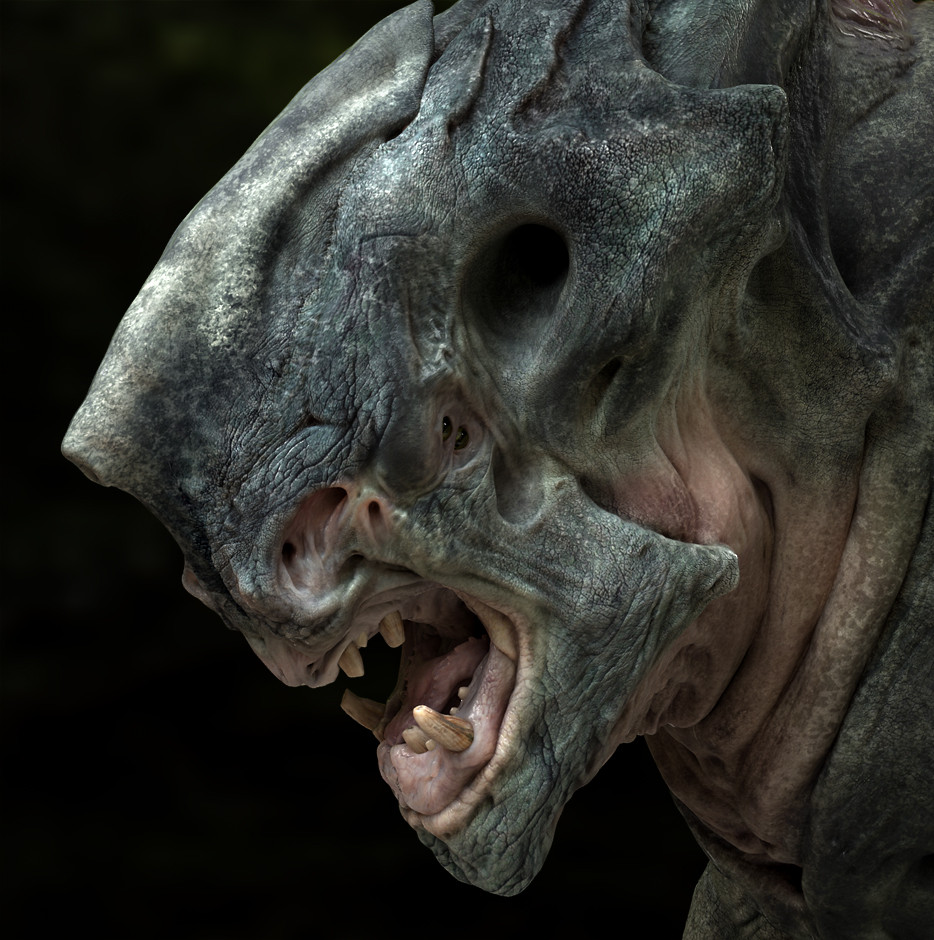
Fausto’s current toolkit includes ZBrush for organic sculpting, Marvelous Designer for clothing, 3ds Max for general and hard-surface modeling, V-Ray for rendering, and Photoshop for paint work and photobashing.
CGC: Your toolkit has evolved over the years. What software do you use at the minute?
FdM: I’m currently using 3ds Max, V-Ray, ZBrush, Marvelous Designer and Photoshop.
CGC: How do you decide what technique to use for a particular image?
FdM: I usually sketch on paper to get some quick ideas out, then I move to 3D to block out shapes. If I’m working on a creature, I go to ZBrush and use DynaMesh to sculpt the character. Then I render the hi-res mesh in V-Ray and jump to Photoshop to use photobashing and painting techniques to add more surface details.
For mechanical design, I use 3D to get most of the details, sometimes adding a pass in Photoshop using photos to add final touches. That usually only happens when the design is approved.
Most of the work I do stays in 3D, since the director and production designer want to see designs fully realized from all angles. Most of my work on Robocop and Transformers didn’t have any photobashing, for example.
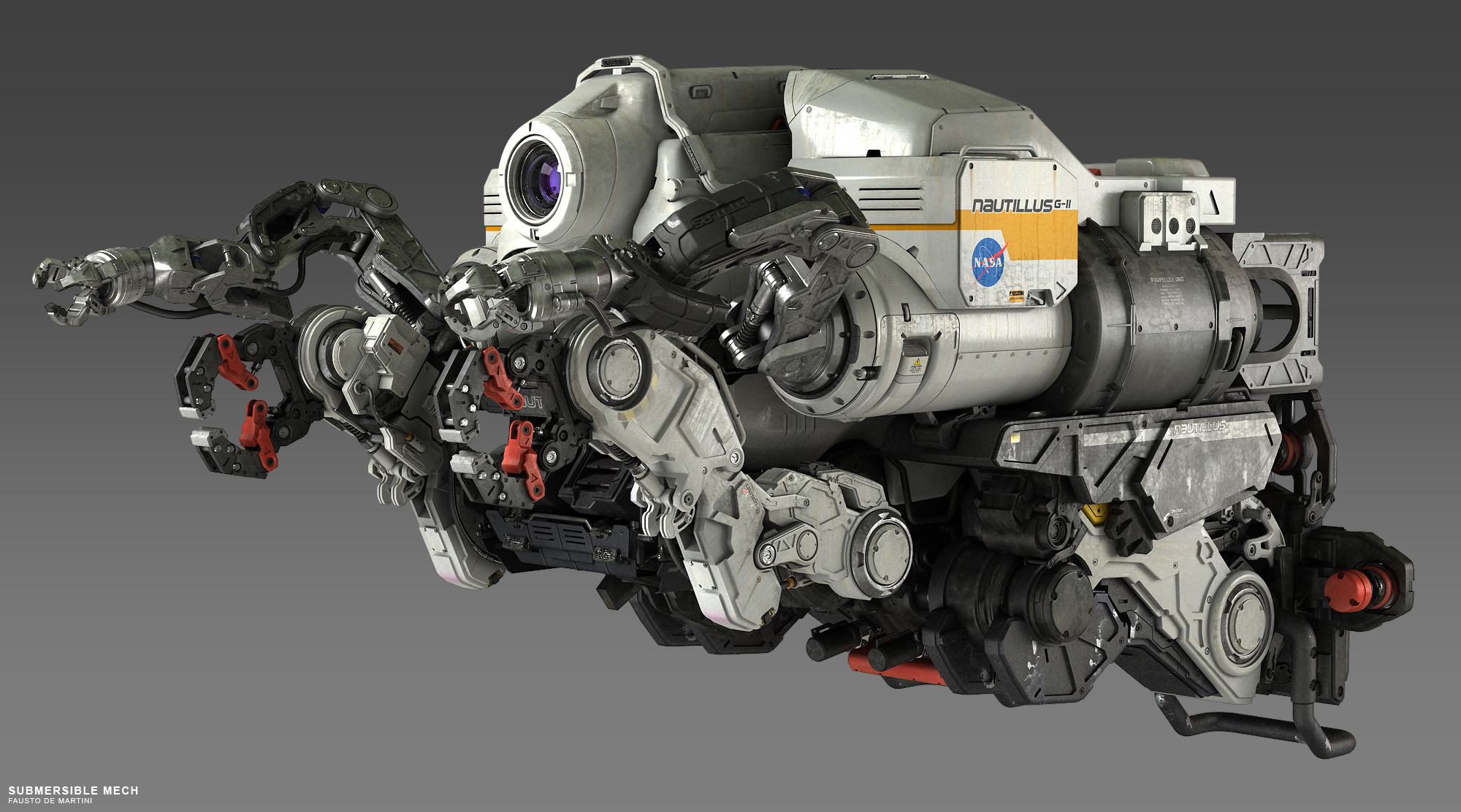
A NASA submersible, created for Gnomon Workshop Live in 2012. Fausto uses an array of techniques to create detailed models like this more quickly, including judicious use of 3ds Max’s Modifier stack.
CGC: Some concept artists avoid 3D because they fear it will slow them down. Do you have any speed tips?
FdM: I have a few ways of working that really help with speed. First, I abuse 3ds Max’s great Modifier stack so I can model on single-faced meshes, then add layers of thickness and subdivisions that stay live until the very end of the process. That way, I can come back and edit the base geometry when necessary without having to throw away what I’ve done since then.
I also use Booleans when I’m doing personal work, since I know when the design is good enough and I won’t be editing it again. Having a shader library and some good 3D models that you can kit bash always helps too.
CGC: What’s the secret of designing a great mech character?
FdM: I try to really research real machines and engineering so I can convey a strong sense of function when I’m designing mechs. Having a large reference folder with lots of different types of machines goes a long way.
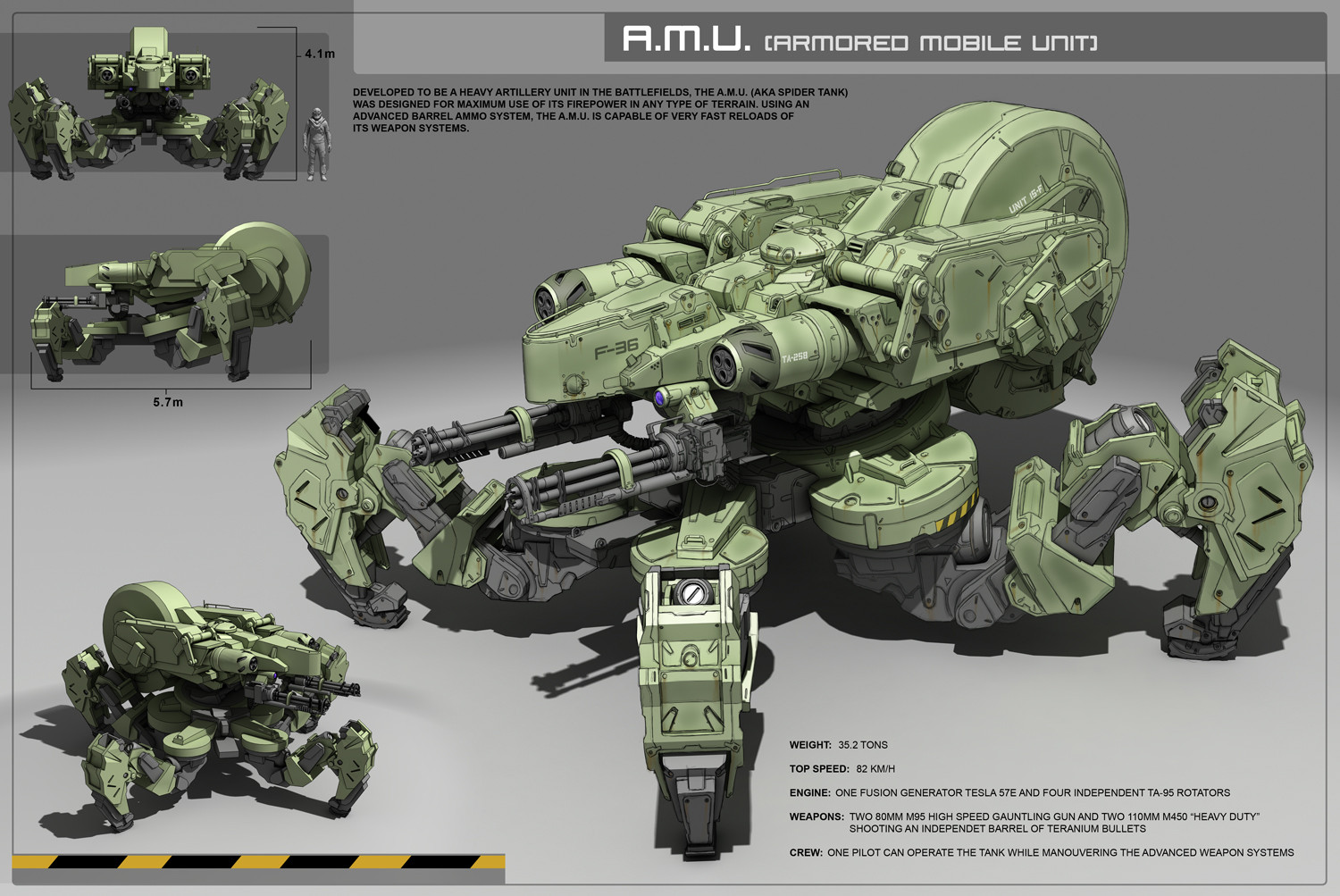
Research how real machines are built, advises Fausto: trying to understand why things are built in a certain way helps you create concept designs that convey their intended function intuitively.
CGC: What’s the most common mistake you see young concept designers make>
FdM: Probably jumping too fast into creating something without really researching how real machines are made. Trying to understand why things are built in a certain way helps your brain to create designs with with the proper complexity, that convey the proper function.
CGC: And if you could travel back in time to visit yourself at the start of your career, what advice would you give your own younger self?
FdM: Start studying art much earlier! I would have tried to get a better foundation in classical painting and sculpture. I really feel sorry that I never went to art school.
Visit Fausto de Martini’s blog
Register for Fausto de Martini’s Weekend Workshop on 3D Design Creation for Film ($129 for three hours)
Full disclosure: CG Channel is owned by the Gnomon School of Visual Effects.
